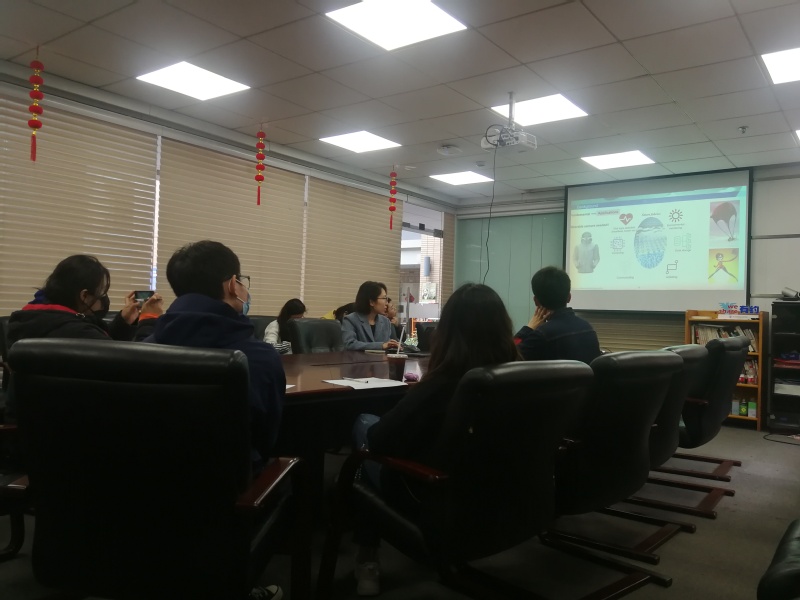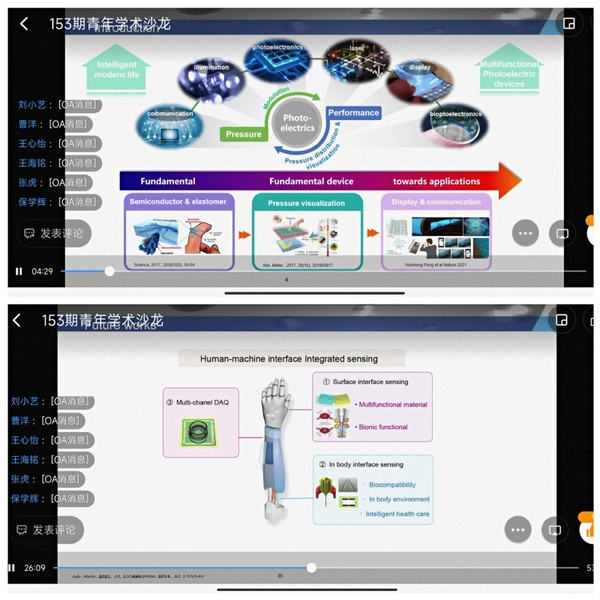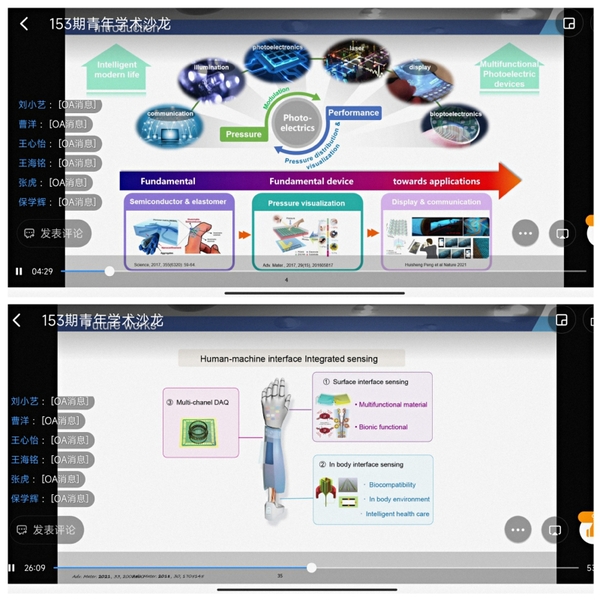The 153th Youth Academic Salon of CBEIS was held on the afternoon of March 25th, 2022. Chen Mengxiao, the research fellow of CBEIS, gave the students a lecture on the topic of Stress Sensitive Photoelectric Sensing and Ultra-conformal Conductive Sensing Fiber.

With the rapid development in the fields of materials science, electronics, statistics and instrumental science, the research and development of sensory devices have also gradually transformed from the traditional on-chip architectures to multi-functional and flexible structures,so as to meet people's needs for high shape adaptability and wearable health monitors. Restrained by energy bandwidth and the brittleness of components, the design of on-chip devices of traditional semiconductor materials is challenged in terms of high integration and conformal flexibility. In view of this, professor Chen carried out research on highly integrated sensing devices.
During the session, Prof. Chen shared her research on the use of new piezoelectric semiconductor heterojunction microwires to fabricate deep ultraviolet photodetectors, and to achieve a three-fold enhancement of measuring accuracy. Her team also innovatively construct ZnO nanowire clusters, which detects stress with its luminescence properties, achieving 3-micron ultra-high-resolution stress distribution imaging. She also introduced the research on the use of fiber thermal drawing technique combined with liquid metal electrodes to construct ultra-conformal conductive fiber devices, which achieved global tactile sensing enduring the impact of a 25m/s baseball.


After sharing her research achievements, Prof. Chen introduced the latest development in the field of multi-functional sensing materials and devices. She emphasized the characteristics of sensing devices including its resemblance human skin, higher sensitivity, resolution and integration, enabling the creation of multi-functional and wearable devices. She also gave examples of materials and devices with self-healing and bionic functions, and discussed the prospects of application in real-time health monitoring, artificial intelligence, robotic systems and other fields.